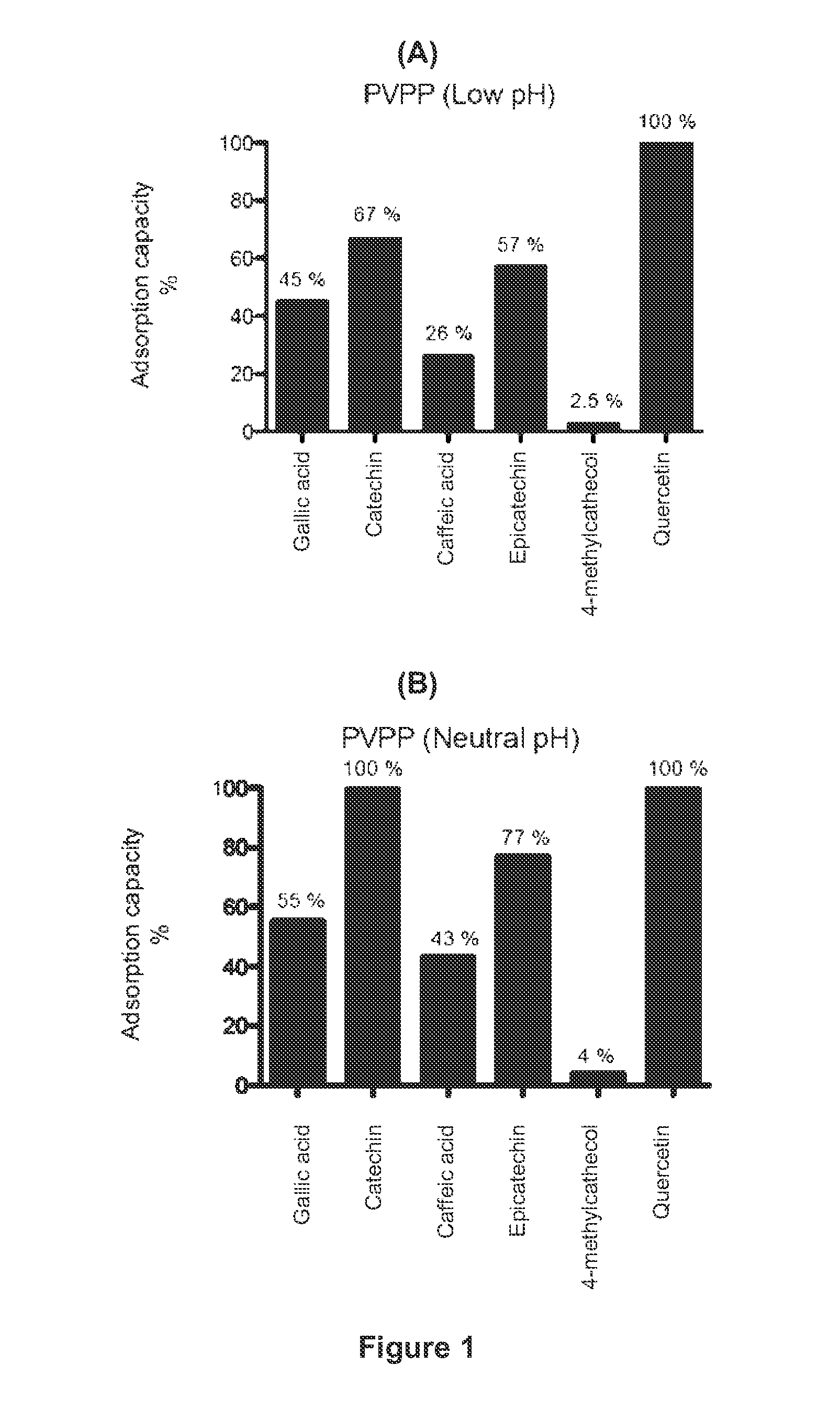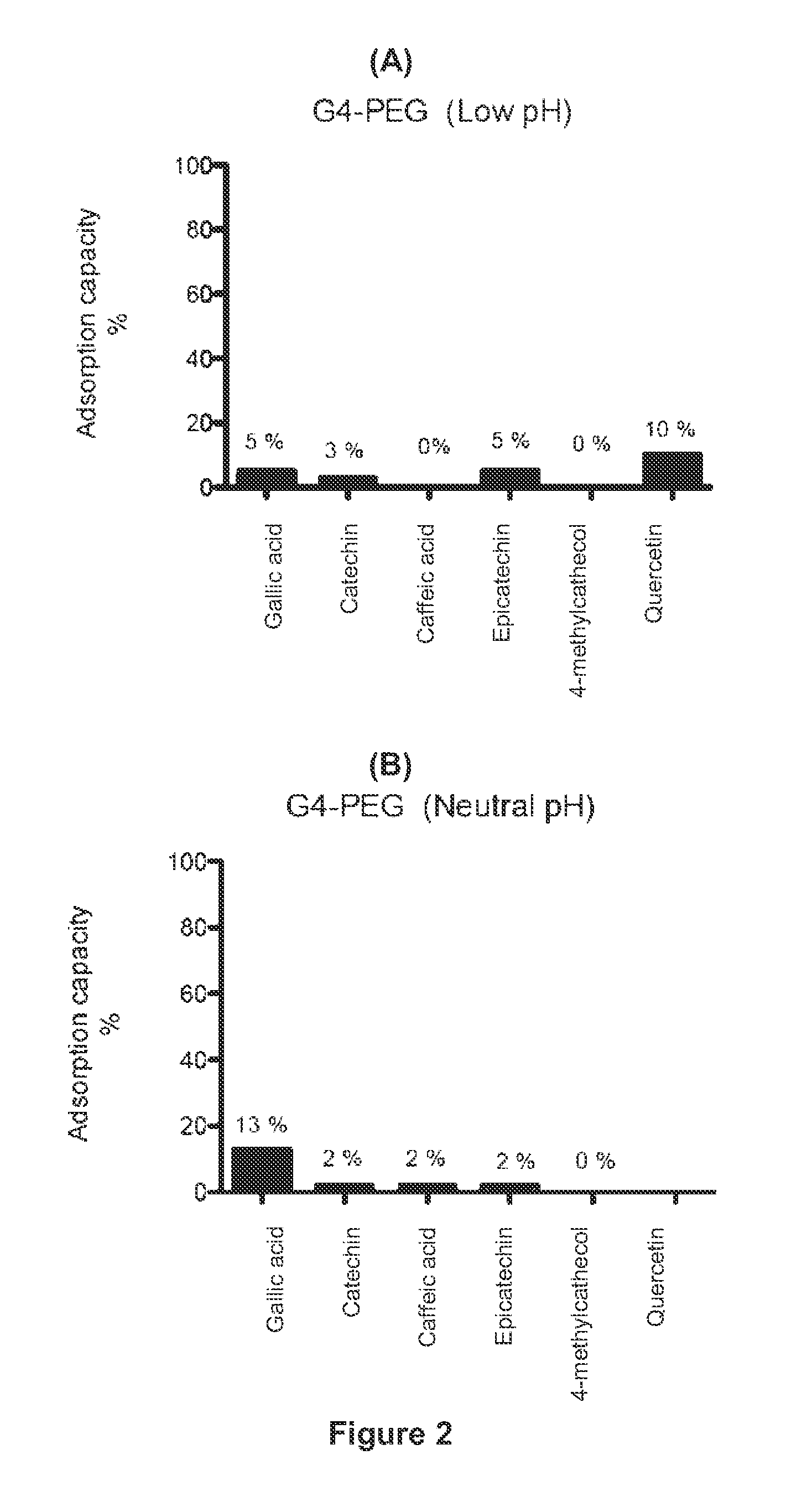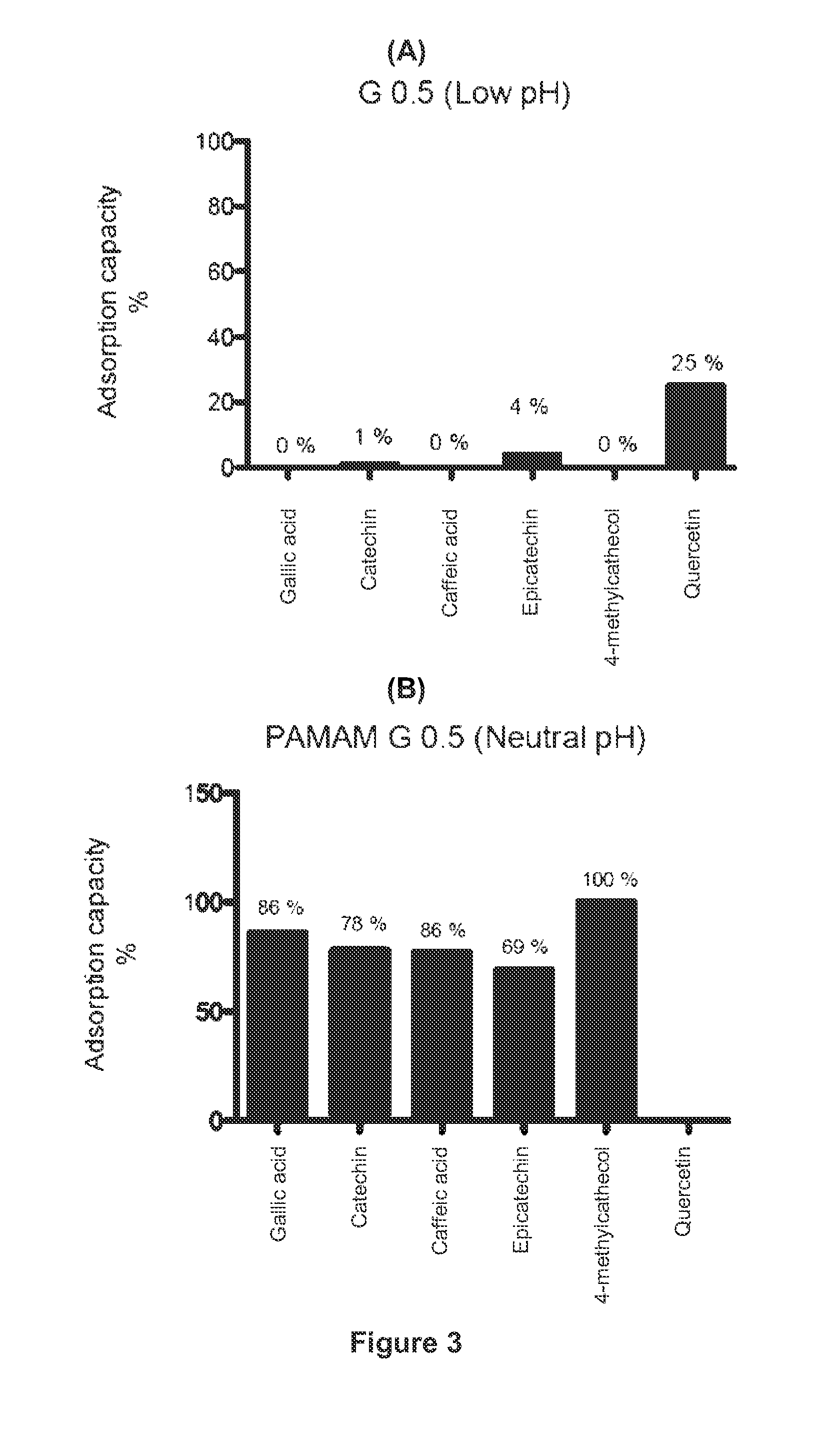Clarification and selective binding of phenolic compounds from liquid foodstuff or beverages using smart polymers
a technology of smart polymers and phenolic compounds, applied in the field of food processing, can solve the problem of only masking the bitter taste of applications
- Summary
- Abstract
- Description
- Claims
- Application Information
AI Technical Summary
Benefits of technology
Problems solved by technology
Method used
Image
Examples
example 1
Synthesis of Polyaniline
[0068]Polyaniline salt was prepared by aqueous polymerization technique. In a 250 ml round bottomed flask, 70 ml of deionized water was taken and 3 ml of concentrated H2SO4 was added slowly while stirring. To this mixture, 1 ml of aniline was added and the solution was kept under constant magnetic stirrer at 0-5° C. To this solution, 30 ml aqueous solution containing amonium persulafate (2.9 g) was added for 10-15 min. duration. The reaction was allowed to continue for 6 h at ambient condition. The precipitated polyaniline salt was filtered and washed with deionized water, methanol and acetone to remove inorganic by-products and oligomers. The polyanilne powder was dried at 60° C. till a constant weight was reached.
example 2
Preparation of Polyaniline Base
[0069]Polyaniline salt powder (1 g), obtained from the previous example, was treated with 100 ml of aqueous sodium hydroxide solution (1M) for 8 h at ambient temperature. Polyaniline base powder was filtered and washed with excess amount of deionized water and finally with acetone and dried at 60° C. till a constant weight was reached.
example 3
Preparation of Polyaniline PAMAM
[0070]H2SO4 was added slowly while stirring. To this mixture, 1 ml of aniline was added and the solution was kept under constant magnetic stirrer at 0-5° C. To this solution, 30 ml aqueous solution containing ammonium persulfate (2.9 g) was added for 10-15 min. duration. The reaction was allowed to continue for 4 h at ambient condition. Then, 0.01 mol % of PAMAM-Gx (x=0 to 5) aqueous solution was added at once in the reaction mixture. The reaction was allowed to stir for 2 h at room temperature. The precipitated (polyaniline)n—PAMAM-Gx (x=0-5 and n=4-128) salt was filtered and washed with deionized water, methanol and acetone to remove residual PAMAM and inorganic by-products and oligomers. The polyanilne-PAMAM powder was dried at 60° C. till a constant weight was reached.
PUM
| Property | Measurement | Unit |
|---|---|---|
| molecular weight | aaaaa | aaaaa |
| molecular weight | aaaaa | aaaaa |
| pH | aaaaa | aaaaa |
Abstract
Description
Claims
Application Information
 Login to View More
Login to View More - R&D
- Intellectual Property
- Life Sciences
- Materials
- Tech Scout
- Unparalleled Data Quality
- Higher Quality Content
- 60% Fewer Hallucinations
Browse by: Latest US Patents, China's latest patents, Technical Efficacy Thesaurus, Application Domain, Technology Topic, Popular Technical Reports.
© 2025 PatSnap. All rights reserved.Legal|Privacy policy|Modern Slavery Act Transparency Statement|Sitemap|About US| Contact US: help@patsnap.com



